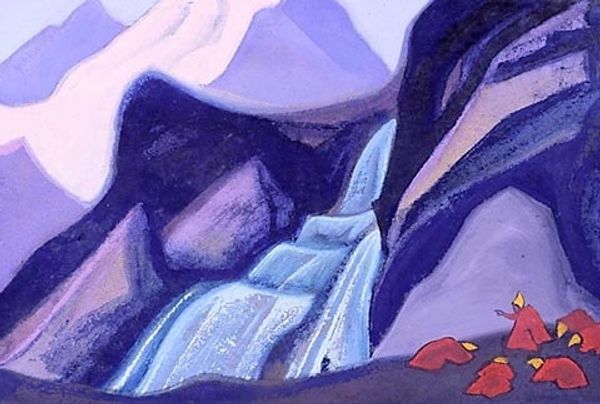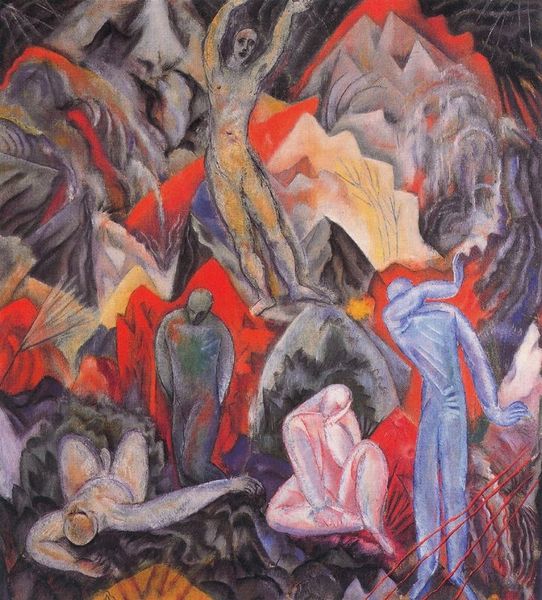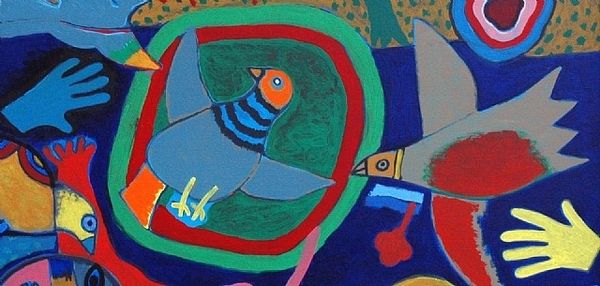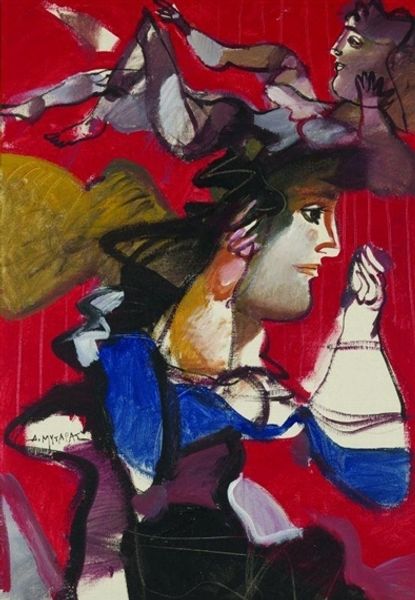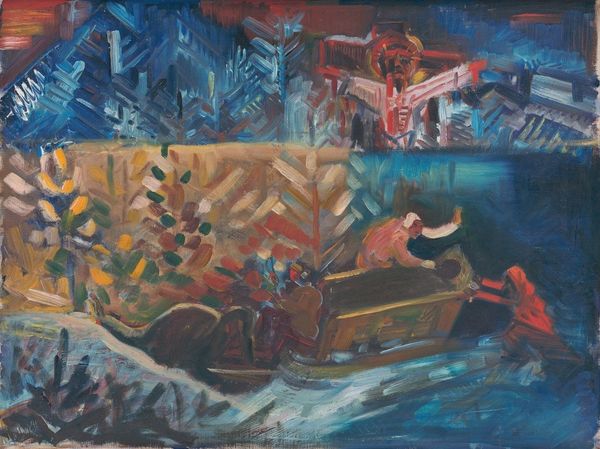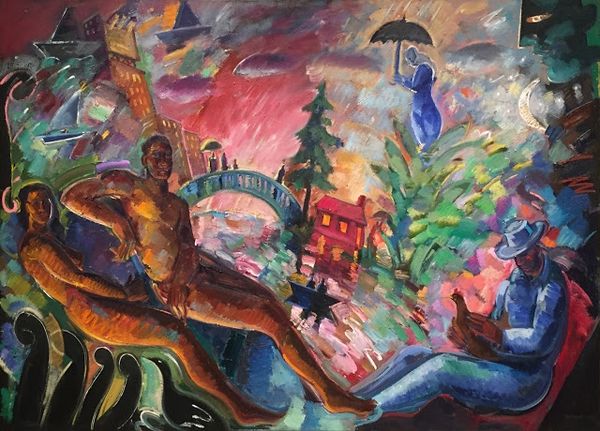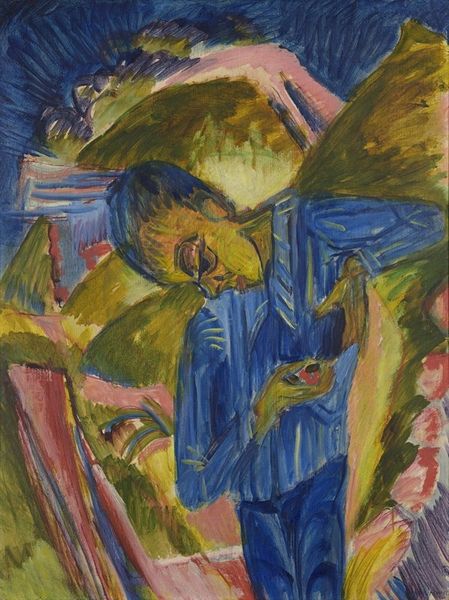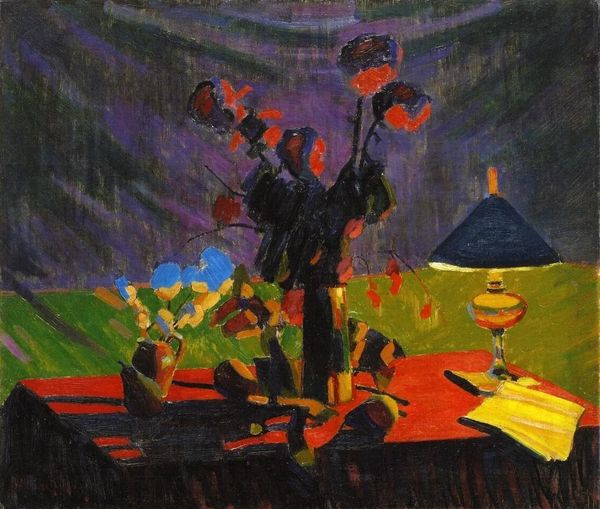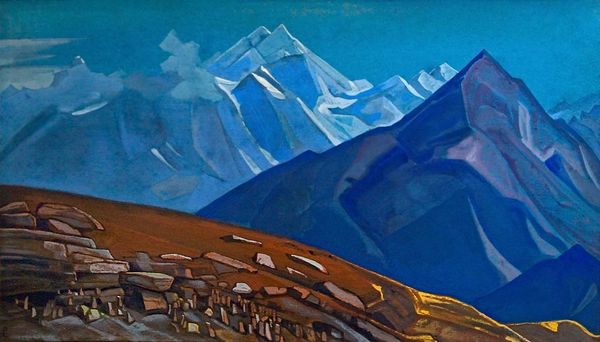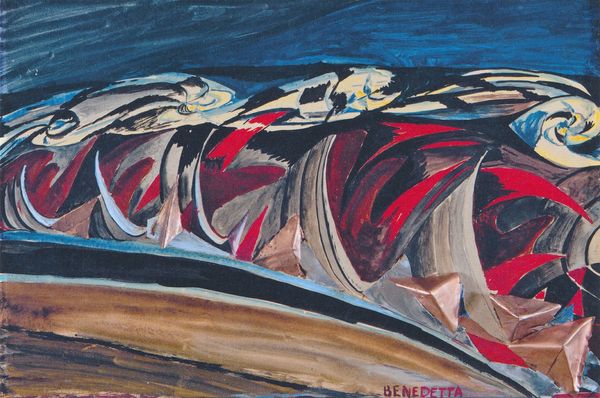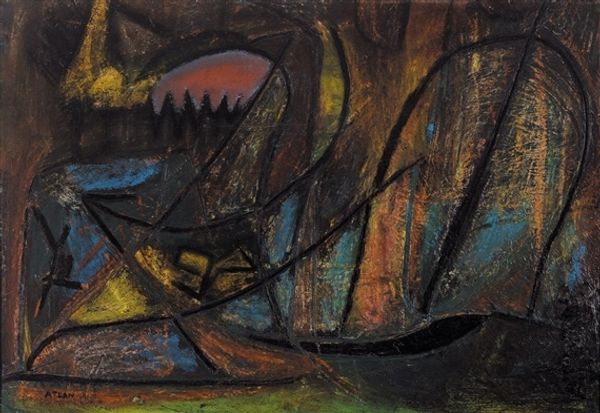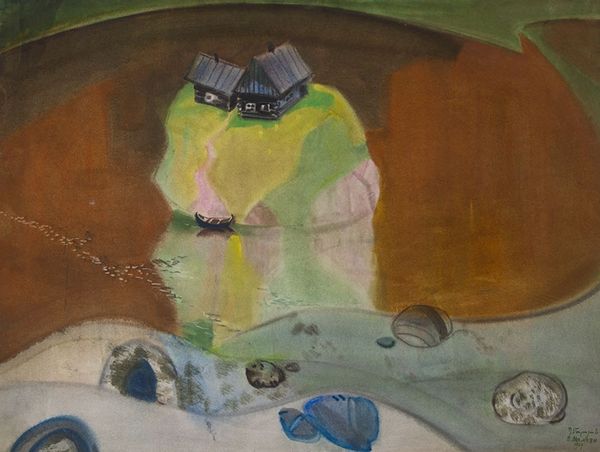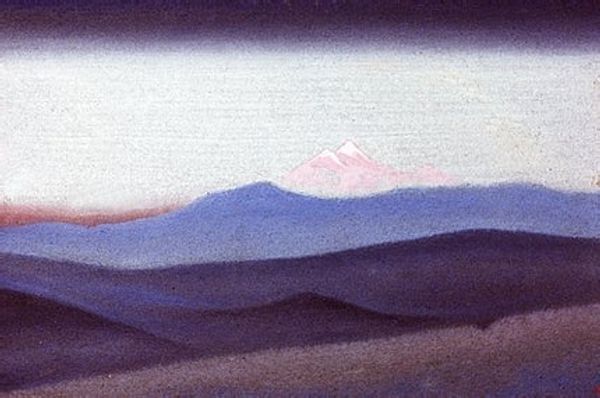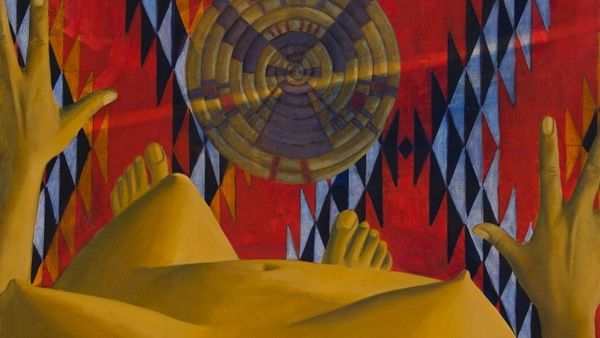
Copyright: Public domain
Curator: The somber and almost mournful atmosphere that permeates this work by Josef Čapek titled "Touha", painted in 1939, immediately grabs you, doesn't it? Editor: Absolutely. The subdued palette, especially the grayscale sky, really amplifies the sitter's isolation. You feel the weight of something unspoken. Curator: Čapek was a key figure in the Czech avant-garde, profoundly influenced by Cubism and later developing a distinctive folk-inspired style. Look how he simplifies forms, using bold color blocks. The seated woman, though, seems almost like an icon. Editor: It's intriguing how the vibrant reds and blues of her clothing contrast with the drab environment. It reads almost like defiance, doesn't it? This was 1939. Considering the escalating political turmoil in Europe at that time, the longing – "Touha" – encapsulated here gains a whole other layer of interpretation. The need and struggle to preserve cultural identity perhaps? Curator: Yes, there’s a universality to it. Consider how the bundled figure, the onion in the corner—objects typically of warmth and domesticity—are rendered desolate, almost devoid of life. Even the vegetation feels stagnant. Čapek, known for his warning against totalitarianism, offers a complex reflection here. Editor: Absolutely. Her posture, the mountains, and the dark cloud formation—it seems as if nature itself reflects a similar inner state of longing or desire, mirroring something intrinsic to the human condition during crisis. The object at her feet – an onion it seems -- feels imbued with unexpected significance in that landscape of yearning. Curator: You touch on something essential. Consider how that longing is perhaps connected to the cultural memory; not merely an individual yearning, but for something lost. Editor: Or something about to be lost? "Touha", born from those times, embodies cultural memory and human resistance. This viewing has heightened my awareness, compelling a call to act within our present moments, because it reveals how longing and a search for purpose can fortify communal bonds in turbulent times. Curator: It’s sobering to consider Čapek’s fate, imprisoned in Bergen-Belsen and eventually perishing due to his artistic defiance. He was a true visionary and this painting carries all the more significance knowing the future he foreshadowed, unintentionally writing a powerful coda into the work.
Comments
No comments
Be the first to comment and join the conversation on the ultimate creative platform.
